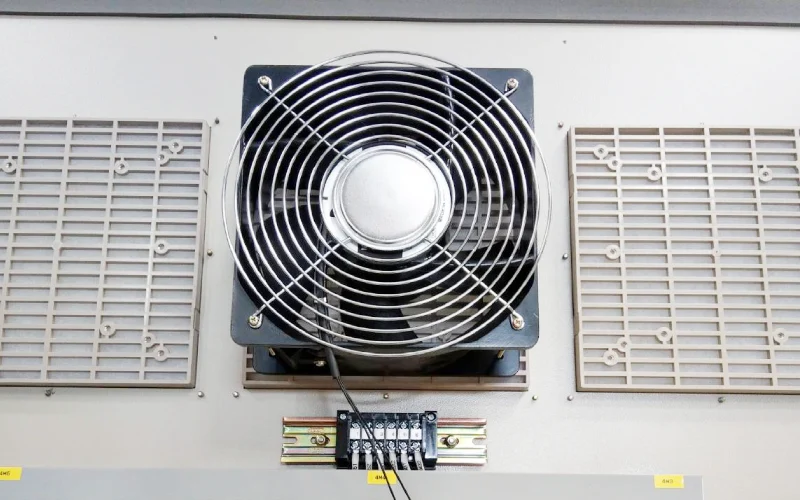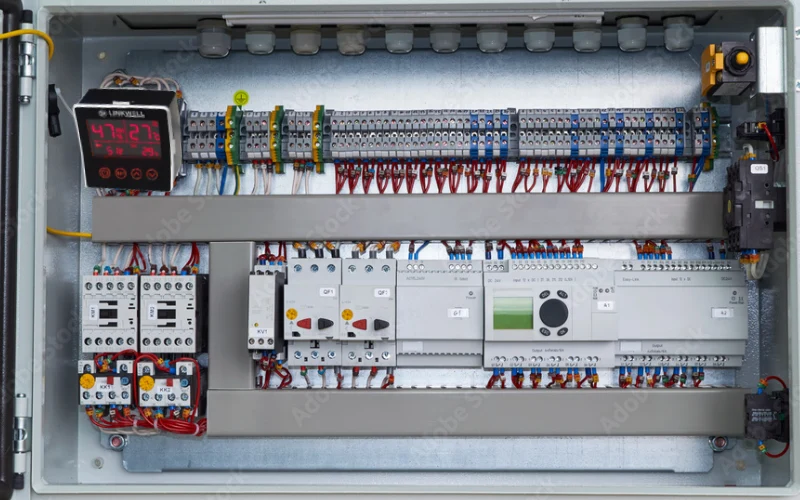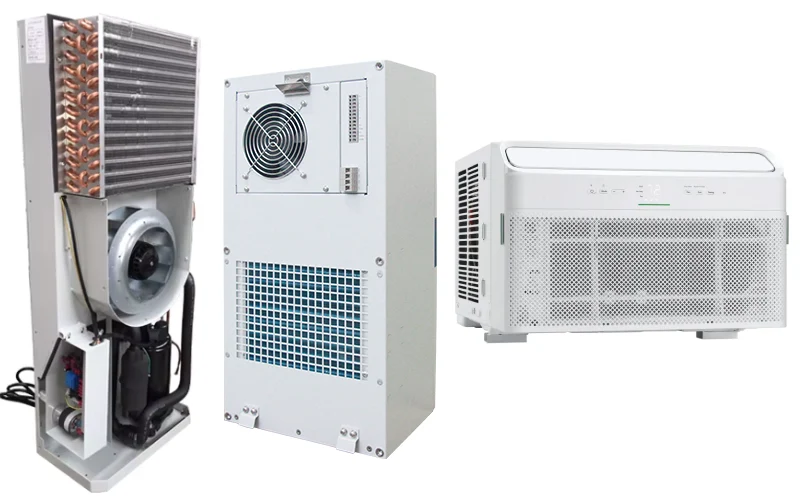Have you ever wondered what is a cable gland? You use it to secure and protect wires where they enter cabinets or equipment. This simple device keeps your cables safe from dust, moisture, and stress. You get peace of mind knowing your electrical connections stay reliable. Many types of cable glands exist, but plastic cable glands make up around 22% of today’s market. Linkwell gives you trusted solutions, especially with their high-quality plastic cable glands.
- Plastic cable glands hold a strong market presence.
- Linkwell offers certified, easy-to-install options.
Key Takeaways
- A cable gland secures and protects wires where they enter equipment, preventing damage from dust, moisture, and stress.
- Choosing the right size cable gland is crucial for effective sealing and protection; always match it to your cable’s outer diameter.
- Linkwell’s plastic cable glands are IP68 rated, ensuring complete dust-tightness and water immersion capability for harsh environments.
- Regular maintenance, like replacing sealing rings every few years, helps extend the life of your cable glands and keeps your system safe.
- Linkwell cable glands offer versatility for various applications, from industrial cabinets to outdoor installations, ensuring reliable performance.
What is a cable gland
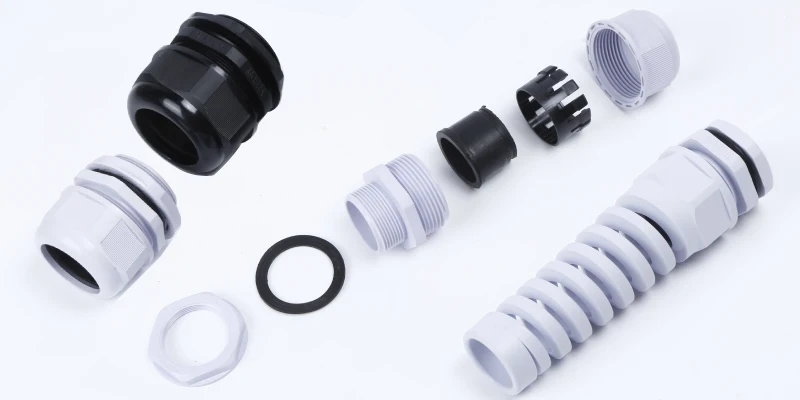
Definition
You might ask yourself, what is a cable gland? It’s a small but mighty device that keeps your wires safe where they enter cabinets, machines, or control panels. When you look at an electrical box, you’ll often see these little fittings holding cables in place. That’s a cable gland doing its job. You use it to lock the cable securely, so it doesn’t slip or wiggle. This simple part makes sure your wires stay protected from the outside world.
A cable gland works like a gatekeeper for your cables. It stops dust, water, and dirt from sneaking inside your equipment. You get a tight seal around the cable, which keeps everything clean and dry. If you want your electrical connections to last, you need to know what is a cable gland and why it matters. It’s not just about holding wires—it’s about keeping your whole system safe.
Basic Function
So, what is a cable gland supposed to do for you? Let’s break it down. The main job is to secure and protect your wires. You install a cable gland at the entry point of your cabinet or enclosure. It grabs the cable and holds it steady, so you don’t have to worry about it getting pulled or twisted. This helps prevent damage to the wires inside.
Here’s a quick look at how a cable gland works:
| Function | Description |
|---|---|
| Strain Relief | Prevents the cable from being pulled or twisted, protecting conductors and insulation. |
| Sealing | Seals the cable entry point to block dust, moisture, and contaminants. |
| Environmental Protection | Shields against extreme temperatures, UV exposure, and chemicals. |
| Earthing/Grounding | Provides a secure connection for grounding the cable’s shield or armor. |
| Cable Termination | Ensures a reliable connection between the cable and equipment. |
When you use a cable gland, you get more than just a tight fit. You get peace of mind. The gland’s locking nut secures everything to the wall of your enclosure. The body of the gland passes through the wall, while the sealing ring squeezes around the cable to keep out water and dust. The clamping cage grips the cable for strain relief, and the cap nut tightens everything up.
Tip: Always check that your cable gland fits your cable size. A good fit means better protection and longer life for your wires.
If you want your electrical system to run smoothly, you need to understand what is a cable gland and how it works. You’ll find cable glands in homes, factories, and outdoor installations. They keep your wires safe from the elements and make sure your connections stay strong. Next time you see one, you’ll know it’s doing a lot more than just holding a cable—it’s protecting your whole setup.
Cable gland protection
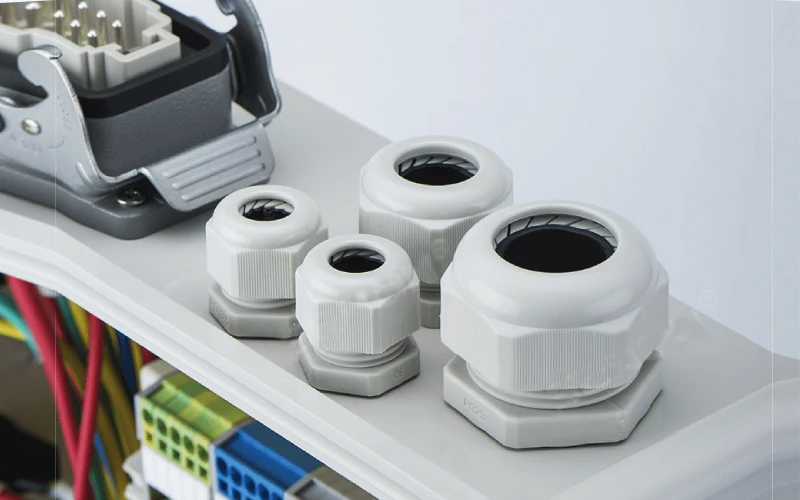
Environmental Sealing
When you install a cable gland, you shield your wires from the harsh world outside. Dust, dirt, water, and chemicals can sneak into cabinets and cause trouble. You want to keep your electrical connections clean and dry, especially in places like factories or outdoor setups. Linkwell’s plastic cable glands come with an IP68 rating, which means they are completely dust-tight and can handle being underwater for long periods. This level of protection keeps your cables safe, even in extreme conditions.
Note: IP68-rated cable glands are perfect for environments where moisture and dust are a constant threat. You get peace of mind knowing your wires stay protected.
Here’s a quick look at what the IP68 rating means for you:
| Feature | Description |
|---|---|
| IP68 Rating | Indicates complete dust-tightness and water immersion capability. |
| Application | Ideal for environments requiring protection from moisture and dust ingress. |
| Importance for Cable Glands | Ensures the integrity and safety of electrical systems in harsh conditions. |
You face many environmental threats when managing cables. Some of the most common include:
- Dust
- Dirt
- Water
- Chemicals
- Explosive atmospheres
Linkwell’s plastic cable glands help you tackle these challenges with ease. You can use them in outdoor installations, industrial cabinets, or anywhere you need strong sealing.
Strain Relief
You know how easy it is for cables to get pulled, bent, or twisted during installation or daily use. If you don’t secure them properly, wires can break or lose connection. That’s where a cable gland steps in. It grabs the cable and anchors it to the panel, stopping it from moving around. This strain relief keeps your wires safe from damage and helps your electrical system run smoothly.
- Cable glands secure the cable to the panel, preventing stress and damage to the electrical connection.
- They anchor the cable, relieving strain on the connection inside your equipment.
- You protect wires from excessive bending or pulling, which can cause breaks or shorts.
- Cable glands prevent cables from being pulled out, keeping everything securely in place.
Linkwell’s plastic cable glands are designed to fit different cable sizes and work in various environments. You get effective strain relief whether you’re working with small signal wires or large power cables. This makes cable management much easier and safer.
Safety Features
Safety matters most when you deal with electricity. You want products that meet strict standards and keep your system secure. Linkwell’s plastic cable glands come with certifications like ISO 9001 and CE, showing they pass tough quality and safety tests. These glands also meet IP68 standards, so you know they protect against dust and water.
Here’s a table of common safety certifications you might see:
| Certification | Description |
|---|---|
| UL Certificate | Meets North American safety and performance standards. |
| TUV Certificate | Preferred in Europe for high material and manufacturing standards. |
| ATEX Certificate | Required for explosive atmospheres, prevents ignition. |
| UKCA Certificate | Ensures compliance with UK safety regulations. |
| CE Certificate | Mandatory for EU health, safety, and environmental protection. |
| IP68 Certificate | High protection against dust and water. |
| ROHS Certificate | Limits hazardous substances for environmental safety. |
| REACH Certificate | Checks chemicals for human and environmental safety. |
| ISO 9001 Certificate | Shows strong quality management processes. |
You also get material options with Linkwell’s plastic cable glands. Nylon is lightweight and resists chemicals and UV rays, making it great for indoor use and telecom cabinets. PVC is flexible and affordable, best for light-duty jobs. Both materials offer solid protection, but nylon works better for tougher environments.
Tip: Always choose cable glands with the right certifications and materials for your project. You keep your system safe and your cables working longer.
Cable glands do more than just hold wires. They protect connections, block out dirt and water, and help prevent accidents. You get reliable cable management and strong signal transmission, which means fewer problems and safer buildings.
Benefits of Linkwell cable gland
Durability
You want your cables to stay protected for years, not just months. Linkwell cable gland stands out because it’s built to last. The tough plastic material resists corrosion and handles rough environments without cracking or fading. You get strong sealing that keeps out dust and water, even when conditions change. This means fewer repairs and less downtime for your equipment.
Tip: Choosing a durable cable gland helps you avoid unexpected breakdowns and keeps your system running smoothly.
Reliability
When you trust your electrical setup, you expect every part to work as promised. Linkwell cable gland delivers reliable performance, backed by strict certifications. You get peace of mind knowing each product meets ISO 9001 and CE standards. The glands offer different protection levels, so you can pick what fits your needs best.
| Sealing Grade | Protection Level | Description |
|---|---|---|
| IP54 | Moderate | Protection against limited dust ingress and water splashes |
| IP66 | High | Dust tight and protected against powerful water jets |
| IP67 | Very High | Dust tight and protected against temporary immersion |
| IP68 | Extremely High | Dust tight and protected against continuous immersion |
| Certification Status | Impact on Product Reliability |
|---|---|
| Complete | Contributes to stability and reliability of product quality |
You get consistent results, whether you’re working indoors or outside. Linkwell’s fast delivery and global support mean you never have to wait long for replacements or new orders.
Application Versatility
You might need cable management in many places, from factories to offices. Linkwell plastic cable glands fit a wide range of applications. You can use them in general electrical setups, industrial environments, or lighting systems. The flexible design lets you secure cables of different sizes and types.
| Application Type | Description |
|---|---|
| General Electrical | Used to secure and seal cables in electrical setups. |
| Industrial | Commonly utilized in various industrial environments. |
| Lighting Applications | Employed in lighting systems to protect against dust and moisture. |
- Environmental protection keeps your cables safe from hazards.
- Strain relief reduces maintenance costs by preventing cable damage.
- Versatility means you only need one solution for many jobs.
You save money over time because you don’t have to replace cables or glands as often. Linkwell’s competitive pricing and certified quality make it a smart choice for any project.
Where cable glands are used
You might wonder where you actually need a cable gland. The answer is simple: almost everywhere you want safe, organized, and protected wiring. Let’s look at three common places you’ll find them.
Industrial Cabinets
You see industrial cabinets in factories, power plants, and automation lines. These cabinets hold important electrical equipment. If you want your system to run smoothly, you need to keep dust, moisture, and dirt out. That’s where a cable gland steps in. It seals the entry points and keeps your wires secure. Linkwell Plastic Cable Glands work well here because they are lightweight, resist corrosion, and fit many cable sizes. You get reliable cable management for wind power, energy storage, and automation projects.
Control Panels
Control panels are the brains of many machines. Inside, you find lots of wires running to switches, sensors, and relays. A cable gland helps you keep everything neat and safe. Here’s how it helps in automation systems:
- Secures the cable for a firm connection.
- Relieves cable strain to prevent wire damage.
- Seals the cable to block dust, debris, and moisture.
You get a tidy panel and fewer wiring problems. Linkwell Plastic Cable Glands make installation easy and help you meet strict safety standards.
Outdoor Installations
Outdoor setups face tough weather, temperature swings, and even chemicals. Think about wind farms, telecom towers, or solar energy storage. You need a cable gland that can handle it all. Linkwell Plastic Cable Glands offer high protection from dust and water, thanks to their IP68 rating. They are also cost-effective and lightweight, which makes them perfect for telecom and renewable energy projects.
| Feature/Aspect | Linkwell Plastic Cable Glands | Metal Cable Glands |
|---|---|---|
| Weight | Lightweight | Heavier |
| Corrosion Resistance | High | High |
| Cost | Cost-effective | More expensive |
| Applications | Cabinets, telecom, energy | Industrial, harsh outdoor |
| Protection | Dust, moisture | Maximum durability |
When you choose a cable gland, always think about the environment, cable size, and installation needs. Linkwell Plastic Cable Glands give you the flexibility and compatibility you need for almost any job.
Tip: Regular checks and the right material choice help your cable glands last longer, especially outdoors.
You want your wires to stay safe and your connections to last. Linkwell Plastic Cable Glands give you strong protection against dust, water, and stress. When you pick certified cable glands, you meet top safety standards and make your setup reliable. Here are some smart tips to keep your cable glands working well:
| Maintenance Practice | Description |
|---|---|
| Replace sealing rings | Change every 3–5 years, or sooner in tough spots. |
| Use approved spares | Always choose parts from trusted brands like Linkwell. |
| Ingress protection tests | Check yearly to keep dust and water out. |
Choose Linkwell for quality, fast support, and peace of mind. 😊
FAQ
How do you choose the right size cable gland?
You need to measure your cable’s outer diameter. Then, match it to the clamping range listed for each gland. If you’re unsure, check Linkwell’s size chart or ask their support team for help.
Are Linkwell plastic cable glands waterproof?
Yes! Linkwell plastic cable glands have an IP68 rating. This means you can use them in wet or dusty places. They keep your cables dry and safe, even outdoors.
Can you install cable glands without special tools?
You don’t need fancy tools. Just use a wrench or pliers to tighten the gland. Make sure the sealing ring fits snugly around your cable. That’s it!
Where can you use Linkwell plastic cable glands?
You can use them in control panels, industrial cabinets, telecom boxes, and outdoor setups. They work well for wind power, energy storage, and automation projects. Their versatility makes them a great choice for many jobs.

